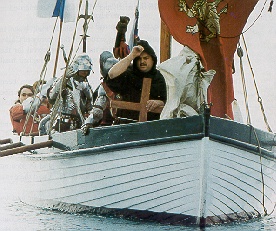

![]()
the Spanish and Portugese discoveries
The Spanish discovered NZ in 1576 if we can believe historical effects, anecdotes, written accounts of the time, Maori observations, and if we apply a little common sense.
A Spanish helmet, similar in age to the one shown here (image below) was dredged from Wellington Harbour about 1880.
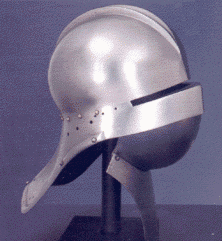
The helmet was handed to the Museum of New Zealand, and catalogued in 1905, as "Item 841 Iron Helmet found in Wellington Harbour" by the director, Augustus Hamilton. Hamilton then wrote to "The Connoisseur" magazine in London, who identified it, "We recognise the skull piece of a European helmet, and have no difficulty in assigning it to the spacious times of Good Queen Bess, 1560-1570."
Hamilton, naturally, questioned how a 16th century Spanish helmet came to be at the bottom of Wellington Harbour.
In 1937 - the question was left hanging for 31 years obviously - the then director Dr Oliver asked the Hispanic Society of America for an opinion. They dated it 1580, of an international type.
In 1957, 20 years later, Dr Barrow wrote to the Armoury at the Tower of London, who confirmed the date, and added the information that such a helmet was often taken aboard ship as officer's equipment.
In 1983, the Museum of New Zealand published an article about the helmet, that it was made of iron, was 2 mm thick, was a rusted brown colour, had evidence of pitting, had no marine encrustations, and didn't appear to have been in seawater for a very long time. Such helmets were made, in the 16th century, in Italy, and would probably have been sold to Spain. Significantly, seawater immersion would have quickly corroded the 2mm thin helmet - but if it had fallen to the bottom of a harbour that silts over, the mud would have quickly covered, and preserved, it.
Dr Selo Soylemezoglu, at the Institute of Environmental Health and Forensic Services examined the helmet later that year, and agreed that the pitting was wide, flat, large and uneven, suggesting seawater immersion for only a short time, "the helmet could have been in an oxygen-free sea water. In other words, a muddy or sandy environment, by way of observing the pitting on the surface.."
In fact, the helmet had been buried in a fathom of mud when retrieved by the Priestman dredge, and seems conclusive evidence of a 16th century helmet, of a type issued to officers aboard a Spanish caravel.
There is independant evidence that suggests a Spanish caravel was indeed in Wellington Harbour about 1580 - under the command of Juan Fernandez. Over 200 years before the first British ship, the "Wellington", commanded by Captain Day, arrived in 1823.
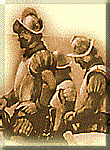
Part of that evidence comes from Capt James Cook himself. In his Journals he wrote that he had discovered from the Chief Tairooa that, "a very few years before I arrived in the sound .. the captain .. of a ship put into a port on the NE coast of Terrawitte (note: Wellington Harbour) .. and that it was by this ship the veneral disease first came amongst them which is now all too common .. However, I have no doubt but he was right so far as a ship having been at Terrawitte as it corresponds with what we were told when I was here in the latter end of 1773" ..
That is, not only does a Maori chief tell Cook how venereal disease had come among his people, but Cook had already heard the story from another, of the visit of the earlier ship. If two witnesses tell of seeing a ship, we assume there was a ship.
In Wellington Harbour.
Tairooa also told Cook that the previous ship's captain had visited across the Strait, into Marlborough Sounds, and that he had married a Maori woman, and had a son from that union.
The visiting ship on the other hand may have been the "San Lesmes" that disappeared in the South Pacific in 1526 - it might not have been Fernandez. Robert Langdon argues in "Journal of Pacific History" that some New Zealanders (Maori) were in fact part-European from that ship.
The Caravel books argue that the San Lesmes ran aground at Amanu by night, that the crew pushed their heavy guns overboard to lighten and refloat the vessel, and that they then proceeded on a westerly course in search of a haven to make any necessary repairs.
After calling at Anaa Atoll, 400 km west of Amanu, where some of the crew evidently left the ship, the caravel continued westward until reaching Opoa at the southeastern corner of Ra'iatea.
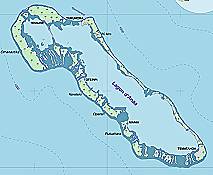
There, some 200 km NW of Tahiti, the crew established a base and either repaired the vessel or built another. Many of the crew then set out to try to return to Spain by sailing southwestward for the Cape of Good Hope. However, this course brought them to the then-unknown North Island of New Zealand where for some reason they settled there.
History records the explorations, and the rapaciousness of course, of the Spanish as they discovered, and colonized 1/2 of the world, reaching as far as the Americas. By the mid-1500's Spain was indeed a vast empire, and much of Sth America was her outpost.
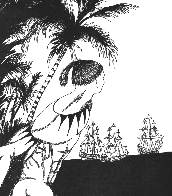
Concepcion, in Chile is on the same latitude, around 40° as the Bay of Plenty in the North Island of NZ. Winds blow steadily along this latitude, from South America to New Zealand, called "the Roaring Forties".
In 1576 the Spanish explorer Juan Fernandez left Concepcion, came across Easter Island 2 weeks later, and sailed on, to discover a "Southern Continent" later that year - he would have discovered NZ if he did nothing but hold a steady course, with the wind always behind him - he arrived back in Peru in 1578.
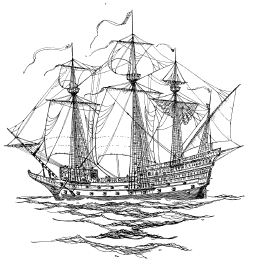
In 1592 Fernandez gave his charts to the cartographer Hernando de Solis and in 1598, updating Mercador's map with the new information, de Solis produced his own world map, showing Fernandez's discovery, appended to Mercator's original Southern Continent.
Looking at de Solis's additions, drawn from material supplied by Fernandez, there is a striking similarity to the coastline of NZ, from the Bay of Plenty to Banks Peninsula.
Fernandez described the continent he had discovered as
1. a very fertile and agreeable continent
2. inhabitated by a fair and well-proportioned people
3. people well-clothed, and a similar height to the Spanish
4. of a gentle and peaceful nature
5. they were shown the greatest hospitality
6. the country appeared rich and plentiful
7. many rivers discharged along the coastline
8. the natives were very different from .. Chile or Peru
These comments were given, verbatim, to Quiros, who gave them to Cortez (image below), who gave them to Dr Arias to give, as the Arias Memorial, to the King of Spain.

Arias implored the King to colonize New Zealand, but Spain's epoch as a colonizing power was over.
Of all the land masses in the Pacific that Fernandez might have bumped into, only New Zealand fits all the criteria he described - and it wouldn't have been hard to find New Zealand, given Fernandez's departure point.
This
Web Directory will always be dynamic ~
all details are flexible and changing